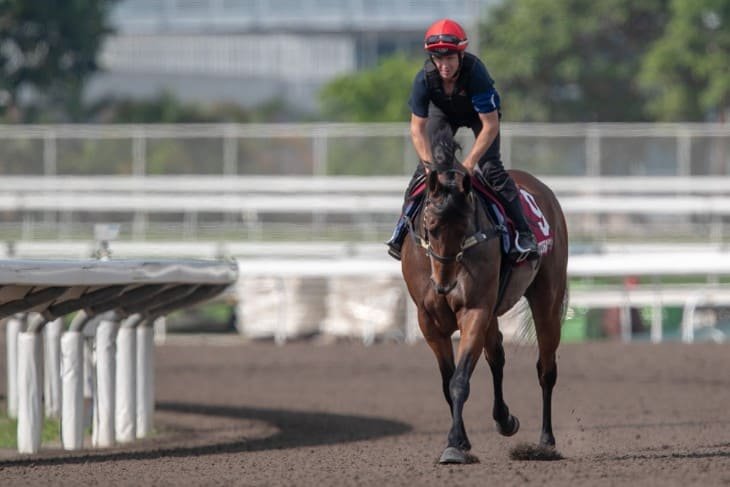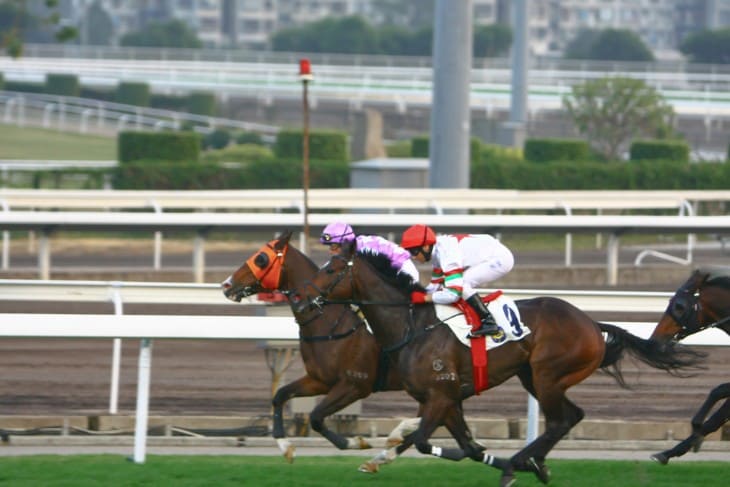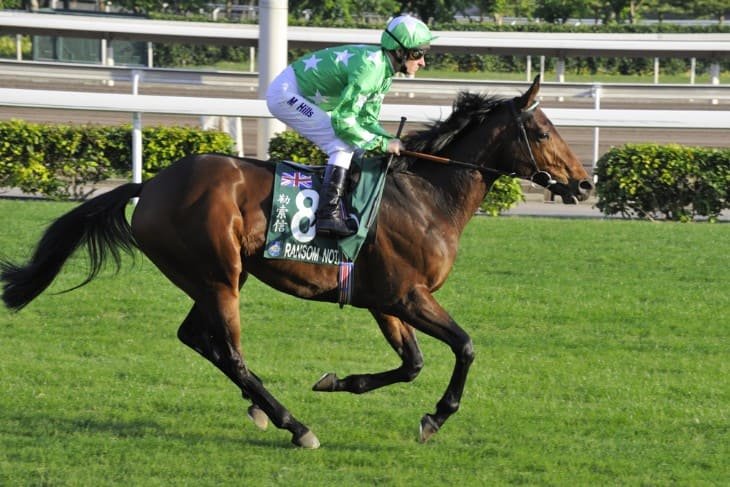- Historical Context: Weight and Age in Horse Racing
- The Role of Weight in Horse Racing Performance
- Weight Carried vs. Jockey Ability: Finding the Balance
- Age Categories in Horse Racing: Two-Year-Olds to Veterans
- Peak Performance Age: Myth or Reality?
- The Impact of Weight and Age on Speed and Endurance
- Factors Beyond Weight and Age: Training, Health, and Genetics
- Case Studies: Notable Horses Defying Age and Weight Norms
- Strategies for Trainers and Owners: Navigating Weight and Age Challenges
- Conclusion: Maximising Success in Horse Racing through Weight and Age Considerations
Horse racing has long been a sport of strategy, where every factor can tip the scales of success or failure. Among these factors, weight and age have a prominent role in determining a horse's performance on the track. In this article, we delve into the practical implications of these two variables and how they shape the outcome of races. From historical context to modern-day strategies, let's explore how weight and age impact the world of horse racing.
Historical Context: Weight and Age in Horse Racing
As we journey through the history of horse racing, we find weight and age considerations embedded in its roots. In the early days, races were a test of endurance and raw speed. Horses carried varying loads, often based on a handicapper's judgment, in an attempt to level the playing field. Age, on the other hand, wasn't always a consideration; it was the need for a horse's physical capability that took precedence.
During the 18th and 19th centuries, race formats evolved, and rules began to standardise. Weight handicaps became more structured, aiming to give each horse a fair chance of winning. Jockeys' weights were adjusted based on their experience and riding skill, emphasising the importance of finding equilibrium between weight and ability.
By the 20th century, horse racing had transformed into a multi-billion-pound industry, and advancements in training, veterinary care, and breeding had a substantial impact. Age categories began to play a role, dividing horses into groups such as juveniles, three-year-olds, and older horses. This allowed for more precise competition, but it also raised questions about the optimal age for peak performance.

The Role of Weight in Horse Racing Performance
As horses thunder down the track, the weight they carry is a crucial determinant of their performance. A horse's physique, stride, and stamina all play a part in how it handles the burden of additional weight. Jockeys, often lightweight athletes, must also navigate the delicate balance between their skills and the weight they add to the horse.
Weight allocation is meticulously calculated to maintain a level playing field. Handicappers assess a horse's past performances, assigning weight penalties or allowances to create parity amongst competitors. The concept is simple: stronger horses carry more weight to challenge their dominance, while less accomplished ones bear less weight to boost their chances.
Yet, the weight's impact goes beyond physics. It's about finding that equilibrium where a horse can unleash its full potential without being hampered by the load it carries. Too much weight can slow down a horse's acceleration and diminish its staying power, while too little weight might not provide enough resistance for optimal performance.
Weight Carried vs. Jockey Ability: Finding the Balance
The synergy between a jockey and their mount is a dance of finesse and synchronisation. The jockey's expertise, alongside the horse's capacity, determines the race's outcome. While weight is a fixed parameter, a jockey's ability to steer and encourage the horse plays a dynamic role in the equation.
Skilled jockeys understand the nuances of weight distribution during a race. They gauge when to push and when to conserve, capitalising on the horse's strengths and compensating for its weaknesses. Jockeys' riding styles can even influence the perception of weight; a balanced and well-timed ride can make a weight penalty seem less burdensome.
Age Categories in Horse Racing: Two-Year-Olds to Veterans
Age, like a silent conductor, orchestrates a horse's journey from fledgling racer to seasoned competitor. In the realm of horse racing, age isn't just a number; it's a compass guiding trainers, owners, and punters towards understanding a horse's developmental stage and potential.
The most distinct age categories are two-year-olds, three-year-olds, and older horses. Two-year-olds, the racing rookies, are known for their unpredictability and rapid progress. These young chargers are still honing their skills, learning the ropes of the track, and developing the physical strength needed for more demanding races.
Three-year-olds take the spotlight in classic races like the Derby and the Oaks. This age marks a pivotal stage in a horse's career, as it matures physically and mentally. Trainers tread carefully, nurturing the horse's abilities while being mindful of the delicate balance between pushing too hard and holding back.
As horses move into their mature years, the variables become more complex. The distinction between a prime contender and a veteran campaigner isn't just about age; it's about managing the wear and tear of a racing life. Older horses bring experience to the track, but they also face the inevitable effects of age, such as decreased speed and endurance.
Peak Performance Age: Myth or Reality?
The notion of a "peak performance age" is a topic of much speculation and debate in the horse racing community. Is there an ideal age when a horse reaches its zenith, combining strength, speed, and experience for the ultimate racing prowess? The answer, it seems, is both yes and no.
While three-year-olds tend to dominate classic races, every age category has its unique advantages. Two-year-olds might surprise with raw talent, while older horses often possess the wisdom to navigate complex race situations. Peak performance isn't confined to a single age; it's a culmination of factors, including genetics, training methods, and individual traits.
The Impact of Weight and Age on Speed and Endurance
Speed and endurance are the yin and yang of horse racing. The interplay between these two attributes is a delicate balance influenced by weight and age. A horse's weight affects its ability to accelerate, while age dictates its capacity to maintain that acceleration over distance.
When it comes to speed, the relationship between weight and acceleration is a physics lesson in action. Horses carrying heavier weights experience a greater force of resistance, which can hinder their quick bursts of speed. Conversely, lighter weights allow for swifter acceleration, but the challenge lies in sustaining that pace over the entire race.
Endurance, on the other hand, is a battleground where age and training collide. Younger horses might exhibit a burst of energy, but the ability to sustain high speeds over longer distances requires the kind of conditioning that only comes with age. Older horses might not match the sprint of their younger counterparts, but their seasoned bodies possess the resilience needed for marathon-like races.
Factors Beyond Weight and Age: Training, Health, and Genetics
Weight and age are powerful variables, but they're not the sole architects of a horse's racing destiny. Beyond these factors, training methods, health, and genetics create an intricate web of influence that can either elevate or impede a horse's performance.
Effective training is an art, blending physical conditioning with mental preparedness. Trainers tailor workouts to harness a horse's strengths and address its weaknesses. A training regimen that focuses on building strength and flexibility can help offset the impact of weight and age, allowing a horse to perform optimally.
Health, too, is a linchpin. A horse's physical condition determines how it copes with the stress of racing. Regular veterinary checks, proper nutrition, and rest are essential for maintaining a horse's wellbeing. Likewise, genetics play a pivotal role; some bloodlines may naturally excel in certain race conditions, giving them an edge regardless of age or weight.
Case Studies: Notable Horses Defying Age and Weight Norms
In the annals of horse racing, there are tales of exceptional equine athletes who defied the odds, rewriting the narratives of age and weight. These remarkable horses have etched their names in history, showing that exceptional talent can transcend the limitations of numbers.
One such example is the legendary gelding Red Rum. He secured three Grand National victories despite carrying heavier weights, demonstrating his resilience and affinity for the Aintree course. Red Rum's accomplishments ignited a conversation about the symbiotic relationship between experience and weight, inspiring trainers to seek a balance that maximises a horse's capabilities.
Similarly, the ageless wonder Istabraq dominated the world of National Hunt racing. This Irish-bred champion won three consecutive Champion Hurdle titles at the Cheltenham Festival, proving that peak performance can span across years. Istabraq's story highlighted the importance of recognising a horse's ability beyond its years, sparking discussions on the potential for mature horses to excel in their craft.
Strategies for Trainers and Owners: Navigating Weight and Age Challenges
For trainers and owners, deciphering the intricate code of weight and age requires a blend of experience, intuition, and data-driven insights. Crafting a winning strategy hinges on understanding the nuances of each horse's profile and tailoring their training and racing plans accordingly.
Trainers employ a mix of tactics to prepare their charges. Conditioning programmes focus on building strength and stamina while mitigating the effects of ageing. Simulation races and timed workouts allow trainers to fine-tune strategies, helping horses adjust to carrying varying weights while maintaining peak performance.
Owners, too, play a pivotal role. Their decisions about when to retire a horse or target specific races depend on a holistic understanding of the horse's potential. Factors like pedigree, past performance, and current condition weigh heavily in the choices they make.

Conclusion: Maximising Success in Horse Racing through Weight and Age Considerations
As we draw the reins on our exploration of the impact of weight and age in horse racing, we find ourselves at the crossroads of tradition and modernity. These age-old factors, ingrained in the sport's history, continue to shape its present and future.
From the days of weight handicaps aimed at levelling the field to the modern science that fine-tunes training and nutrition, the journey has been a dynamic one. We've seen how weight and age are not isolated variables but are woven into a tapestry of factors that influence a horse's performance.
The balancing act between weight and acceleration, the dance between jockey and horse, the evolution of age categories – all these elements contribute to the theatre that is horse racing. Age isn't a limitation; it's a chapter in a horse's story, marked by the wisdom of experience. Weight isn't a burden; it's a challenge that trainers and jockeys artfully navigate to unlock potential.
As trainers aim to sustain a horse's peak condition and owners seek that elusive formula for success, it becomes evident that this world of horse racing isn't governed solely by numbers and figures. It's a realm of strategy, intuition, and a deep understanding of the equine spirit.







